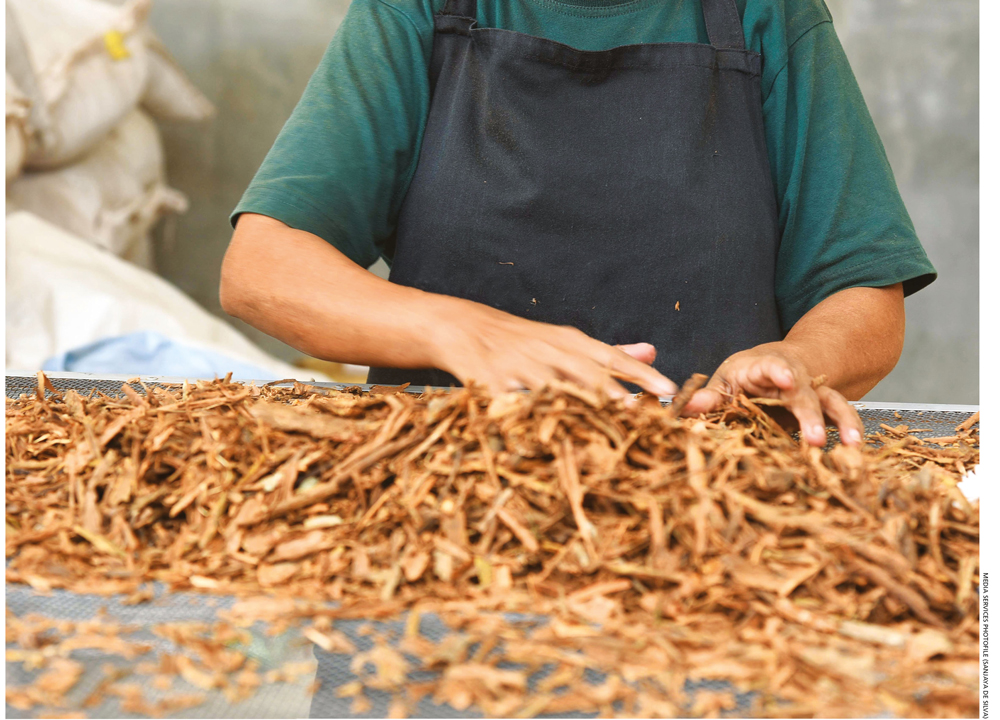SPICE TRADE
Spice of the Economy
Nanda Kohona outlines the integral role of spices in economic revival
Considering the reaction of the spice trade to COVID-19, Nanda Kohona points to social media reports claiming the benefits of certain spices to boost immunity (viz. ginger, turmeric, cinnamon, garlic, cloves and onions), which has enabled the sector to survive.
“People were looking for immediate solutions to COVID-19 such as consuming these spices, which led to an increase in demand and higher prices. With demand increasing, the authorities found ways to enable farming communities to resume their work and avoid total disruption of the spice trade,” he says.
Commenting on business disruptions to the spice trade, Kohona remarks: “Initially, restrictions on movement, healthcare regulations, the non-availability of sanitary materials and equipment, and a paucity of labour caused problems. However, these issues were overcome, enabling work to resume in the fields.”
non-availability of sanitary materials and equipment, and a paucity of labour caused problems. However, these issues were overcome, enabling work to resume in the fields.”
According to Kohona, due to the curfew, many spice processing plants were shut down and faced the arduous task of settling bank loans. In addition, rising interest rates, salary payments without ongoing production and other capital expenditure had the future of the spice trade looking bleak.
He notes that fortunately, “with social media promoting the use of spices to boost immunity, most businesses resumed operations.”
The export of spices during this period rose substantially with more buyers. However, despite this increase in demand, Kohona says that transport was an issue with many airlines grounded and vessels not calling at the Port of Colombo: “This caused a serious setback especially for exporters who had consignments ready to be shipped.”
Meanwhile, he explains that when operations recommenced, more labour was recruited to cater to the higher demand. Effective cooperative farming communities were formed, thereby guaranteeing employment for workers while CSR initiatives increased during this time.
With proposals made to the government to employ returning migrant workers from the Middle East and train them to process cinnamon, in addition to affording them the status of ‘cinnamon technicians,’ Kohona observes: “Cinnamon is a lucrative sector with technicians being able to earn an average of between Rs. 60,000 and 70,000 rupees during the high season from May to November.”
As for contingency plans in the spice trade, he says the government must offer soft loans with grace periods for SME spice businesses: “The high securities and collateral required should be reduced to avoid discouragement. Farmers should be assured of a stable buyback price for spices, which is linked to exporters.”
Describing how government officials must engage farmers proactively, Kohona says it is essential to provide fertiliser and plants, and ensure that underutilised land is made available for farming, along with technical know-how and quality standards from the Department of Export Agriculture and Department of Agriculture, Sri Lanka Standards Institution (SLSI) and Industrial Technology Institute of Sri Lanka (ITI).
He continues: “A good transport system is necessary for on time delivery to processing plants, and to establish central drying or semi-processing facilities within close proximity of plantations, storage facilities for excess produce, and to convert excess production into a more value added product.”
As time passes, several long-term changes are anticipated in the spice market.
Kohona explains that “a majority of spices were traditionally exported in bulk with value addition occurring overseas. But due to COVID-19 and the shutdown of plants in importing countries, many began depending on suppliers to provide their own brands in value added form.”
He goes on to describe how this opened the door for Sri Lankan spice exporters to ship value added or retail packs direct to buyers – especially supermarkets: “It was an opportunity to sell products through e-marketing services with door-to-door delivery.”
In conclusion, Kohona states that “value addition is important for Sri Lanka to earn foreign exchange as our landmass is limited for farming and becoming smaller due to population expansion. If we concentrate on high-yield spice varieties and value addition including organic spices of high value, the nation can reach its goals.”
Nanda Kohona is a Director of International Commodity Exports, an associate of Silvermill Group and a Past Chairman of The Spice Council of Sri Lanka – he was interviewed by Lashani Ramanayake.




